November 02, 2021 | Vanessa McMains
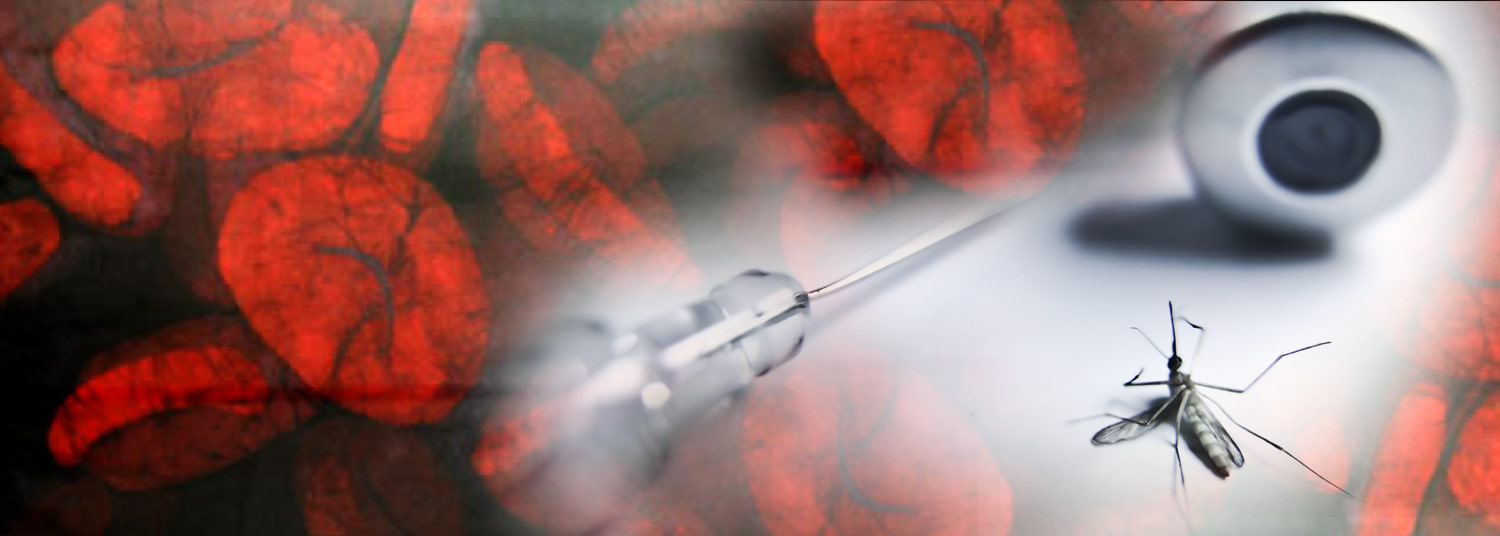
Credit: modified illustration of red blood cells created by Kathy Strauss
UM School of Medicine Finding May Lead to New Avenues of Research for Identifying Vaccine Targets or Treatments

The researchers say that their unexpected finding provides new insight into how the human body responds to malaria infection and may ultimately help to identify new ways to treat malaria or develop vaccines.
The study was published on September 13 in NPJ Vaccines.
More than 400,000 people die each year of malaria infections, with more than two-thirds of these deaths in children under 5 years old, according to the World Health Organization (WHO). In early October 2021, the WHO recommended widespread use of a new malaria vaccine in children who live in regions with moderate to higher malaria transmission rates, the first human vaccine to be recommended for a parasite infection. While the vaccine would prevent millions of infections and save thousands of lives, the researchers are actively pursuing the next generation of malaria vaccines that may be even more effective.
“We’ve made progress in treating and preventing deaths due to malaria infections, but progress has plateaued, and we need new ideas,” said pediatric infectious disease physician and study author Andrea Berry, MD, Associate Professor of Pediatrics at UMSOM and scientist at UMSOM’s Center for Vaccine Development and Global Health (CVD). “Not much had been done to study IgA antibodies in malaria infections, because people had not thought that they were important. Yet, because we were not looking for them, we may have missed a whole avenue of research that we can now explore.”

For the new study, the research team looked at antibodies collected from the blood of 54 adult research participants after being infected with malaria in the laboratory — either through an IV inserted directly into the blood or through mosquito bites. They also examined samples of blood taken from 47 children living in Mali, West Africa, who were enrolled in a malaria vaccine trial and acquired malaria during the study period. Researchers detected high levels of IgA antibodies in the adult participants infected with malaria. In addition, 10 of the children had levels of IgA antibodies similar to those of the adults tested.
“We do not know what triggers the IgA antibodies to develop, but we think it happens early in a malaria infection,” said Dr. Berry. “Some people think that the response might happen when the mosquito injects the parasite into the skin. Interestingly, some of our participants were not bitten by mosquitoes because their malaria infection was delivered intravenously, so there are probably additional triggers for IgA development.”
Now, she said, determining why the children did not universally have high levels of IgA will give researchers more of an understanding of how malaria infections affect the body.
“There are several possible explanations for this difference between the adults and the children,” said Dr. Berry. “Perhaps, children’s immune systems respond differently to the parasite than adults do, or it is possible that IgA antibodies are only created during the first malaria infection.” She explained that in the adult participants, researchers knew that they received their first infection, but whether the children had been previously infected was unknown. The timing of the infection and sample collection was uniform among the adult study participants, but not with the children, because their malaria infections were coincidental during the study.
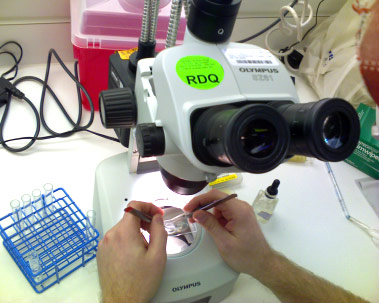
“Even with medical advances, malaria remains one of the leading causes of death in developing countries,” said E. Albert Reece, MD, PhD, MBA, Executive Vice President for Medical Affairs, UM Baltimore, and the John Z. and Akiko K. Bowers Distinguished Professor, and Dean, UMSOM. “Getting back to basics and exploring unknown fundamental mechanisms behind the body’s response to malaria infection may be the key to revealing new ways to prevent and treat this devastating disease.”
This work was funded by the National Institute of Allergy and Infectious Diseases (grants U19AI065683, N01-AI25461, R44AI058375, R44AI055229, K23AI125720, U19AI110820, U01AI110852, R01AE141900, R01AI067954, R01AI095916, 19AI089686 and contracts HSN272201300022I, HHSN272201500002C, 2R44AI058375-06A1), the Fogarty International Center of the NIH (D43TW001589), the Doris Duke Charitable Foundation, Howard Hughes Medical Institute, the University of Maryland, the National Center for Advancing Translational Sciences (1UL1TR003098), Sanaria, Inc., the Geneva Foundation (V-12VAXHFRS-03), the Medical Technology Enterprise Consortium (MTEC-17-01), Pfizer (C4591001) and the Joint Warfighter Medical Research Program (W81XWH-JW14843), a Doris Duke Clinical Scientist Development Award, and the National Heart, Lung, and Blood Institute (K01HL140285-01A1).
Two of the study authors work for Sanaria, Inc. Sanaria raised the laboratory mosquitoes and manufactured the malaria given to patients intravenously.
About the University of Maryland School of Medicine
Now in its third century, the University of Maryland School of Medicine was chartered in 1807 as the first public medical school in the United States. It continues today as one of the fastest growing, top-tier biomedical research enterprises in the world -- with 46 academic departments, centers, institutes, and programs, and a faculty of more than 3,000 physicians, scientists, and allied health professionals, including members of the National Academy of Medicine and the National Academy of Sciences, and a distinguished two-time winner of the Albert E. Lasker Award in Medical Research. With an operating budget of more than $1.2 billion, the School of Medicine works closely in partnership with the University of Maryland Medical Center and Medical System to provide research-intensive, academic and clinically based care for nearly 2 million patients each year. The School of Medicine has nearly $600 million in extramural funding, with most of its academic departments highly ranked among all medical schools in the nation in research funding. As one of the seven professional schools that make up the University of Maryland, Baltimore campus, the School of Medicine has a total population of nearly 9,000 faculty and staff, including 2,500 students, trainees, residents, and fellows. The combined School of Medicine and Medical System (“University of Maryland Medicine”) has an annual budget of over $6 billion and an economic impact of nearly $20 billion on the state and local community. The School of Medicine, which ranks as the 8th highest among public medical schools in research productivity (according to the Association of American Medical Colleges profile) is an innovator in translational medicine, with 606 active patents and 52 start-up companies. In the latest U.S. News & World Report ranking of the Best Medical Schools, published in 2021, the UM School of Medicine is ranked #9 among the 92 public medical schools in the U.S., and in the top 15 percent (#27) of all 192 public and private U.S. medical schools. The School of Medicine works locally, nationally, and globally, with research and treatment facilities in 36 countries around the world. Visit medschool.umaryland.edu
Contact
Vanessa McMains
Director, Media & Public Affairs
University of Maryland School of Medicine
Institute of Human Virology
vmcmains@ihv.umaryland.edu
Cell: 443-875-6099
Related stories

Wednesday, April 05, 2023
UM School of Medicine Researchers Chart Path Forward on Developing mRNA Vaccines for Infections Beyond COVID-19
After helping to develop and test new mRNA technologies for COVID-19 vaccines, University of Maryland School of Medicine (UMSOM) researchers and scientists are turning their attention to utilizing this innovative technology to ward off other infectious diseases like malaria and influenza. Last month, UMSOM faculty in the Center for Vaccine Development and Global Health (CVD) launched a new clinical trial to investigate the use of mRNA technologies to create a vaccine against malaria. CVD Director Kathleen M. Neuzil, MD, MPH, FIDSA also provided commentary in the nation’s leading medical journal on the feasibility of using mRNA to develop a universal influenza vaccine that could eliminate the need for seasonal shots.
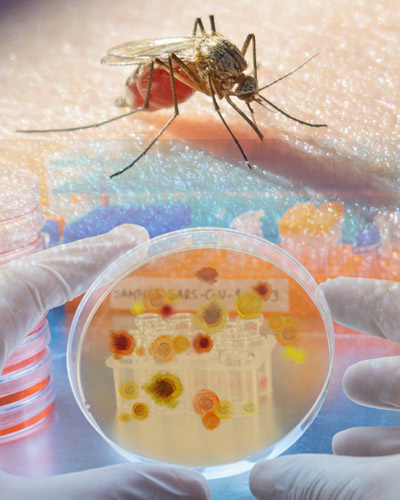
Thursday, December 22, 2022
A Three-Dose Malaria Vaccine Shows Safety, Efficacy in West African Adults
A three-dose regimen of a whole-parasite vaccine against malaria – called Plasmodium falciparum sporozoite (PfSPZ) vaccine – demonstrated safety and efficacy when tested in adults living in Burkina Faso, West Africa, which has endemic malaria. That is the finding of a new study published Dec. 7 in Science Translational Medicine. Researchers at the University of Maryland School of Medicine’s Center for Vaccine Development and Global Health (CVD) led the work.

Monday, July 18, 2022
New Genomic Research Shows Why Testing Malaria Vaccines in the Clinic is as Rigorous as Natural Exposure in the Field
Malaria is the deadliest mosquito-borne parasitic infection of humans. In 2021, after a century of research, the World Health Organization (WHO) approved the world’s first malaria vaccine. That vaccine reduces the incidence of malaria infections in young children aged 5-17 months by only 30 percent, meaning that it remains critical to continue developing and testing more effective vaccines.

Sunday, October 28, 2018
American Society of Tropical Medicine & Hygiene Awards Dr. Miriam Laufer the LePrince Medal for Malaria Research
Miriam Laufer, MD, MPH, Professor of Pediatrics and Associate Director for Malaria Research at the University of Maryland School of Medicine’s (UMSOM) Center for Vaccine Development and Global Health (CVD), was awarded the Joseph Augustin LePrince Medal by the American Society of Tropical Medicine and Hygiene (ASTMH).

Thursday, May 04, 2017
UM School of Medicine Researchers Receive $9 Million Grant for Malaria Research
The University of Maryland School of Medicine has been awarded an International Center of Excellence for Malaria Research (ICEMR) grant by the National Institutes of Health’s National Institute of Allergy and Infectious Diseases (NIAID), one of seven ICEMRs awarded worldwide. With funding of more than $9 million over seven years, the grant will be used to research and develop new tools to help eliminate drug-resistant malaria in Myanmar and neighboring countries in Southeast Asia.
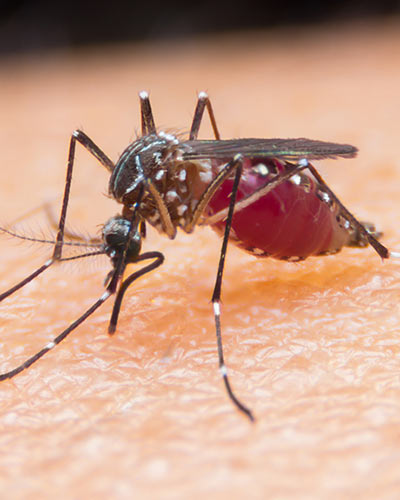
Friday, February 24, 2017
Experimental Malaria Vaccine Provides Durable Protection Against Multiple Strains in NIH Clinical Trial
An experimental malaria vaccine protected healthy subjects from infection with a malaria strain different from that contained in the vaccine, according to a study published this week in the Proceedings of the National Academy of Sciences (PNAS). The research was conducted by scientists at the University of Maryland School of Medicine and the National Institute of Allergy and Infectious Diseases (NIAID), part of the National Institutes of Health (NIH).
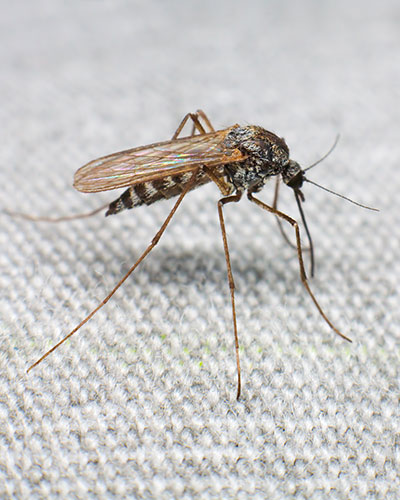
Wednesday, July 06, 2016
UMSOM Begins Malaria Vaccine Trial in Burkina Faso
Malaria is one of the world’s deadliest diseases: it infects hundreds of millions of people every year, and kills about half a million, most of them under five years of age.
